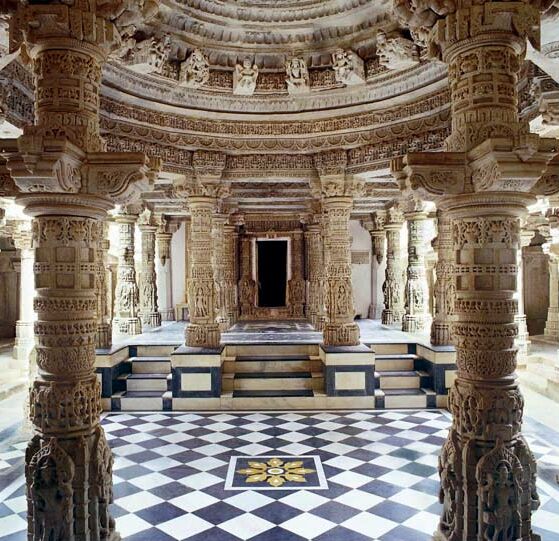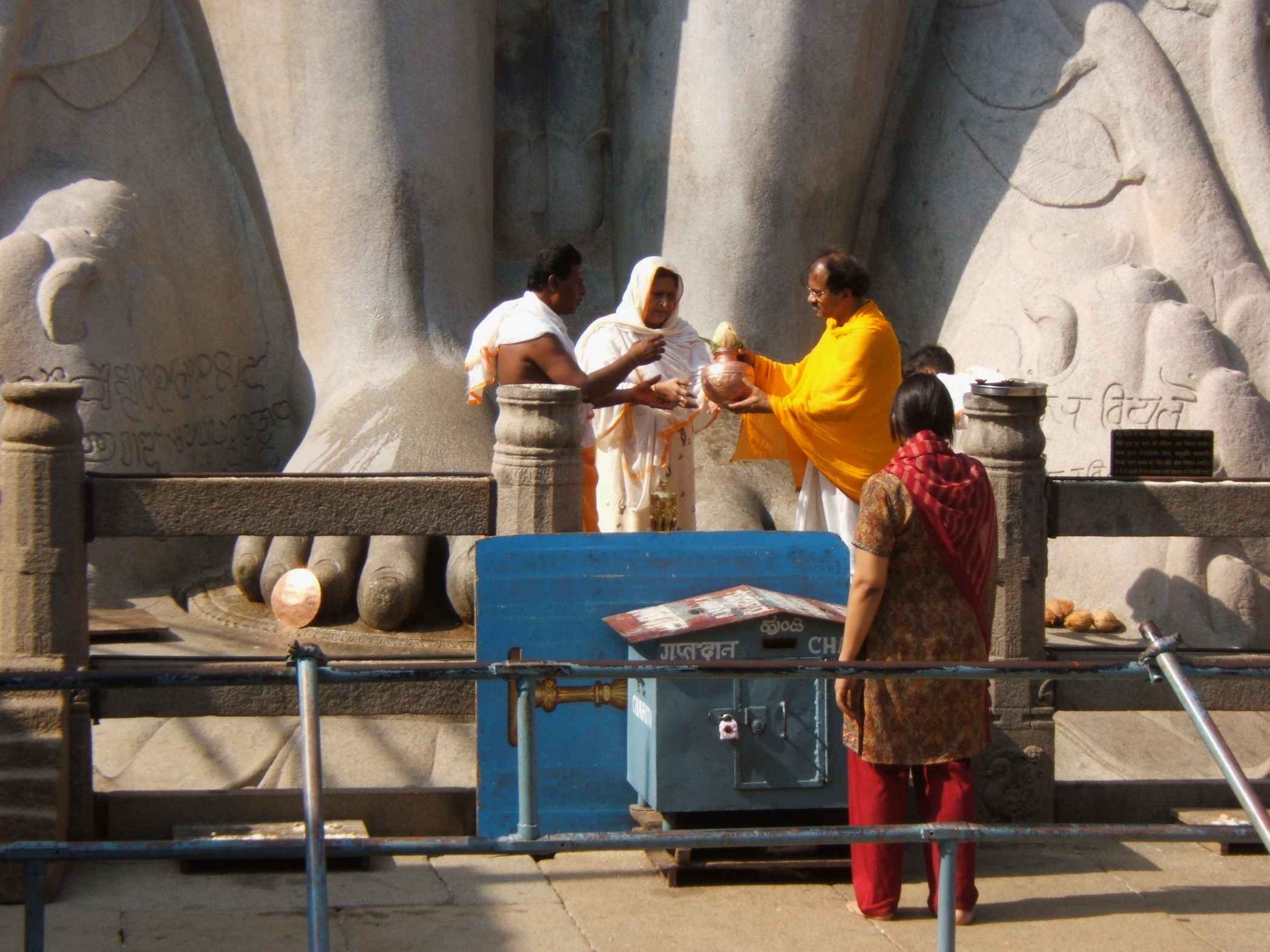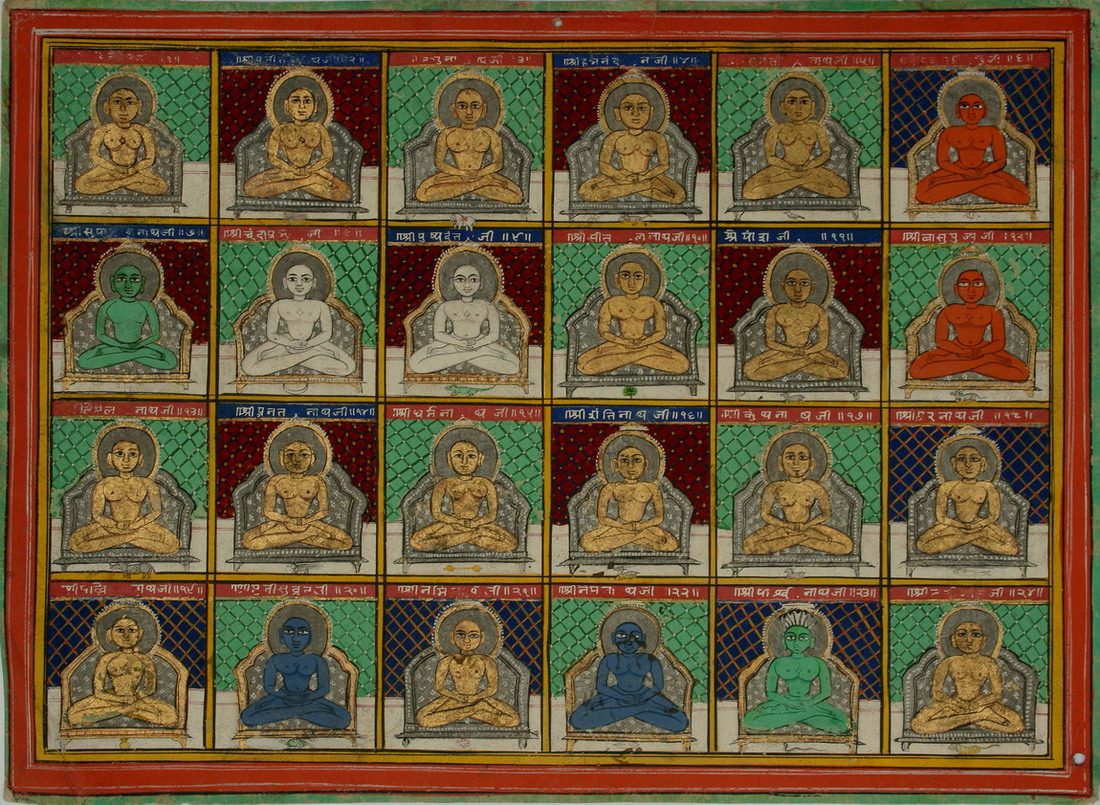|
House Temple
A house temple (Ghar Derasar or Griha Chaityalaya) is a private Jain shrine that is placed within a personal residence. Sometimes it is separate room or structure in a compound. Jain scholars prescribe that the height of a pratima in a house shrine should not exceed 11 aṅgulas, i.e. about 21 cm. The formal communal temple is often referred to as a shikharbandi Jinalaya, i.e. with a shikhara. Sometimes a temple starts as a house temple, which grows into a formal shikharbandi Jinalaya when the community grows to be sufficiently large. Jain author Haribhadra Suri states in one of his famous granthas, ''Sambodh Prakran'' that if a lay person has savings more than 100 rupees, then there must be a ''Ghar derasar'' at his/her home. Further he says that the house which does not have a Ghar derasar is not a home, it is a graveyard. In that derasar, an image of a Tirthankara must be installed, on which the rituals of anjanashalaka ( Panch Kalyanaka Pratishtha Mahotsava) must be d ... [...More Info...] [...Related Items...] OR: [Wikipedia] [Google] [Baidu] |
Jain Temple
A Jain temple, Derasar (Gujarati: દેરાસર) or Basadi (Kannada: ಬಸದಿ) is the place of worship for Jains, the followers of Jainism. Jain architecture is essentially restricted to temples and monasteries, and Jain buildings generally reflect the prevailing style of the place and time they were built. Jain temple architecture is generally close to Hindu temple architecture, and in ancient times Buddhist architecture. Normally the same builders and carvers worked for all religions, and regional and periodic styles are generally similar. For over 1,000 years, the basic layout of a Hindu or most Jain temples has consisted of a small garbhagriha or sanctuary for the main murti or idol, over which the high superstructure rises, then one or more larger mandapa halls. Māru-Gurjara architecture or the "Solanki style", is a particular temple style from Gujarat and Rajasthan (both regions with a strong Jain presence) that originated in both Hindu and Jain temples a ... [...More Info...] [...Related Items...] OR: [Wikipedia] [Google] [Baidu] |
Aṅgula
Aṅgula (from - 'a finger; the thumb; a finger's breadth') is a measure of length. Twelve ''aṅgulas'' make a Vitasti or span, and twenty-four a Hasta or Cubit The cubit is an ancient unit of length based on the distance from the elbow to the tip of the middle finger. It was primarily associated with the Sumerians, Egyptians, and Israelites. The term ''cubit'' is found in the Bible regarding Noah .... 108 Angulam make a 'Dhanusha'. One ''Aṅgula'' during the Maurya period is believed to be approximately equal to 1.763 centimetres. In the Hindu , the size of an aṅgula is considerably larger "the length of the middle digit /nowiki>phalange">phalange.html" ;"title="/nowiki>phalange">/nowiki>phalange/nowiki> of the middle finger", but the ratios with the larger units remain unchanged. Notes {{DEFAULTSORT:Angula Units of length Customary units in India Obsolete units of measurement ... [...More Info...] [...Related Items...] OR: [Wikipedia] [Google] [Baidu] |
Shikharbaddha Mandir
A shikharbaddha mandir is a traditional Hindu or Jain place of worship, typically featuring architecture characterized by superstructures with towers pinnacles and domes and often built of carved marble, sandstone, or other stone. While such mandirs are common in many branches of Hinduism, the use of the term ''shikharbaddha mandir'' to describe such mandirs is most common in the Swaminarayan branch of Hinduism as well as Jainism. The opposite of the shikharbaddha temple is one without a shikhara tower, i.e. with a flat roof. Definition A ''mandir'' is a Hindu, Jain or Buddhist temple. The term ''shikharbaddha'' is composed of the Sanskrit word ''shikhara,'' meaning mountain peak, and ''baddha'', meaning bound Thus, a ''shikharbaddha mandir'' refers to a type of Hindu or Jain temple with a pinnacle atop its sacred shrine that makes it appear bounded by a mountain peak. Aims and significance Shikharbaddha mandirs house the sacred images of the deity in the central shrines, thu ... [...More Info...] [...Related Items...] OR: [Wikipedia] [Google] [Baidu] |
Sikhara
''Shikhara'' (IAST: '), a Sanskrit word translating literally to "mountain peak", refers to the rising tower in the Hindu temple architecture of North India, and also often used in Jain temples. A ''shikhara'' over the ''garbhagriha'' chamber where the presiding deity is enshrined is the most prominent and visible part of a Hindu temple of North India. In South India, the equivalent term is ''vimana''; unlike the ''shikhara'', this refers to the whole building, including the sanctum beneath. In the south, ''shikhara'' is a term for the top stage of the vimana only, which is usually a dome capped with a finial; this article is concerned with the northern form. The southern ''vimana'' is not to be confused with the elaborate gateway-towers of south Indian temples, called ''gopuram'', which are often taller and more prominent features in large temples. It is argued that stylistic aspects seen on Buddhist architecture like the ''stupa'' may have been influenced by the ''shikhara' ... [...More Info...] [...Related Items...] OR: [Wikipedia] [Google] [Baidu] |
Haribhadra Suri
Acharya Haribhadra Suri was a Śvetāmbara mendicant Jain leader, philosopher , doxographer, and author. There are multiple contradictory dates assigned to his birth. According to tradition, he lived c. 459–529 CE. However, in 1919, a Jain monk named Jinvijay pointed out that given his familiarity with Dharmakirti, a more likely choice would be sometime after 650. In his writings, Haribhadra identifies himself as a student of Jinabhadra and Jinadatta of the Vidyadhara Kula. There are several, somewhat contradictory, accounts of his life. He wrote several books on Yoga, such as the Yogadṛṣṭisamuccaya and on comparative religion, outlining and analyzing the theories of Hindus, Buddhists and Jains. Life The earliest story of his life say that Haribhadra was born in Dharmapuri and that he was an educated Brahmin who decided that he would become a pupil of anyone who could state a sentence which Haribhadra could not understand. After hearing a Jain nun named Yākinī Mahat ... [...More Info...] [...Related Items...] OR: [Wikipedia] [Google] [Baidu] |
Śrāvaka (Jainism)
In Jainism, the word Śrāvaka or Sāvaga (from Jain Prakrit) is used to refer to the Jain laity (householders). The word ''śrāvaka'' has its roots in the word ''śrāvana'', i.e. ''the one who listens'' (to the discourses of the saints). The ''tirthankara'' restores or organises the '' sangha'', a fourfold order of ''muni'' (male monastics), '' aryika'' (female monastics), '' śrāvaka''s (male followers) and ''śrāvikā''s (female followers). In Jainism, there are two kinds of votaries: *The householder (one with minor vows) *The homeless ascetic (one with major vows). According to the Jain text '' Puruşārthasiddhyupāya'': Ratnakaranda śrāvakācāra, a major Jain text, discusses the conduct of a Śrāvaka in detail. Six essentials In Jainism, six essential duties (''avashyakas'') are prescribed for a ''śrāvaka''. These help the laity in achieving the principle of ahimsa which is necessary for his/her spiritual upliftment. The six duties are: #Worship of ... [...More Info...] [...Related Items...] OR: [Wikipedia] [Google] [Baidu] |
Tirthankara
In Jainism, a ''Tirthankara'' (; ) is a saviour and supreme preacher of the ''Dharma (Jainism), dharma'' (righteous path). The word ''tirthankara'' signifies the founder of a ''Tirtha (Jainism), tirtha'', a fordable passage across ''Saṃsāra (Jainism), saṃsāra'', the sea of interminable birth and death. According to Jains, ''tirthankaras'' are the supreme preachers of ''dharma'', who have conquered ''saṃsāra'' on their own and made a path for others to follow. After understanding the true nature of the self or soul, the ''Tīrthaṅkara'' attains ''kevala jnana'' (omniscience). A Tirthankara provides a bridge for others to follow them from ''saṃsāra'' to ''moksha'' (liberation). In Jain cosmology, the wheel of time is divided into two halves, Utsarpiṇī', the ascending time cycle, and ''avasarpiṇī'', the descending time cycle (said to be current now). In each half of the cycle, exactly 24 ''tirthankaras'' grace this part of the universe. There have been infini ... [...More Info...] [...Related Items...] OR: [Wikipedia] [Google] [Baidu] |
Panch Kalyanaka Pratishtha Mahotsava
''Panch Kalyanaka Pratishtha Mahotsava'' is a traditional Jain ceremony that consecrates one or more Jain Tirthankara icons with celebration of Panch Kalyanaka (five auspicious events). The ceremony is generally held when new Jain temple is erected or new idols are installed in temples. 5 names of panch kalyanak are Chyavan (conception) Janma (birth) Diksha (renunciation) Keval Gyan (omniscience) Moksha (liberation) Panch Kalyanaka The five kalyanakas are the five major events associated with a Tirthankara are: # Chyavan (conception) # Janma (birth) # Diksha (renunciation) # Keval Gyan (omniscience) # Moksha (liberation) These events are celebrated in relation to icons of Tirthankaras which is called ''Pratishtha''. After the pratishtha the statue represents the Tirthankara, and becomes a worshippable object. A pratishtha must be authorised by an acknowledged leader of the sangha, an Acharya or a Bhattaraka, or a representative (pratishthacharya), who can recite the sac ... [...More Info...] [...Related Items...] OR: [Wikipedia] [Google] [Baidu] |
Butsudan
A , sometimes spelled butudan, is a shrine commonly found in temples and homes in Japanese Buddhist cultures. A ''butsudan'' is either a defined, often ornate platform or simply a wooden cabinet sometimes crafted with doors that enclose and protect a '' gohonzon'' or religious icon, typically a statue or painting of a Buddha or bodhisattva, or a calligraphic mandala scroll. The butsudan's primary use is for paying respects to the Buddha, as well as to family members who have died. Arrangement A ''butsudan'' usually contains an array of subsidiary religious accessories, called ''butsugu'', such as candlesticks, incense burners, bells, and platforms for placing offerings such as fruit, tea or rice. Some Buddhist sects place '' ihai'' memorial tablets, ''kakochō'' death registers for deceased relatives, or urns containing the cremated remains of relatives, either within or near the ''butsudan''. The defined space which occupies the Butsudan is referred to as ''Butsuma''. If t ... [...More Info...] [...Related Items...] OR: [Wikipedia] [Google] [Baidu] |





